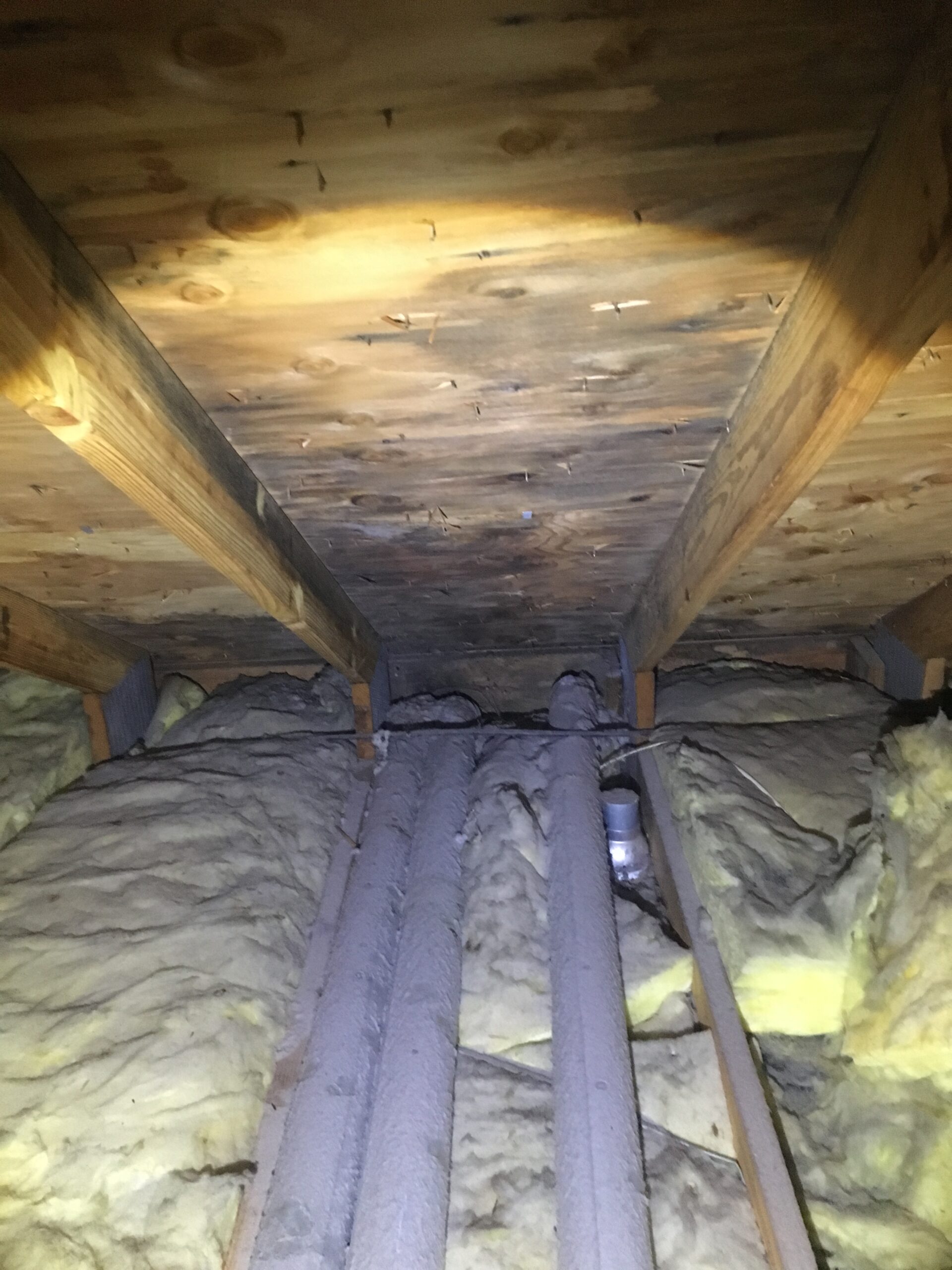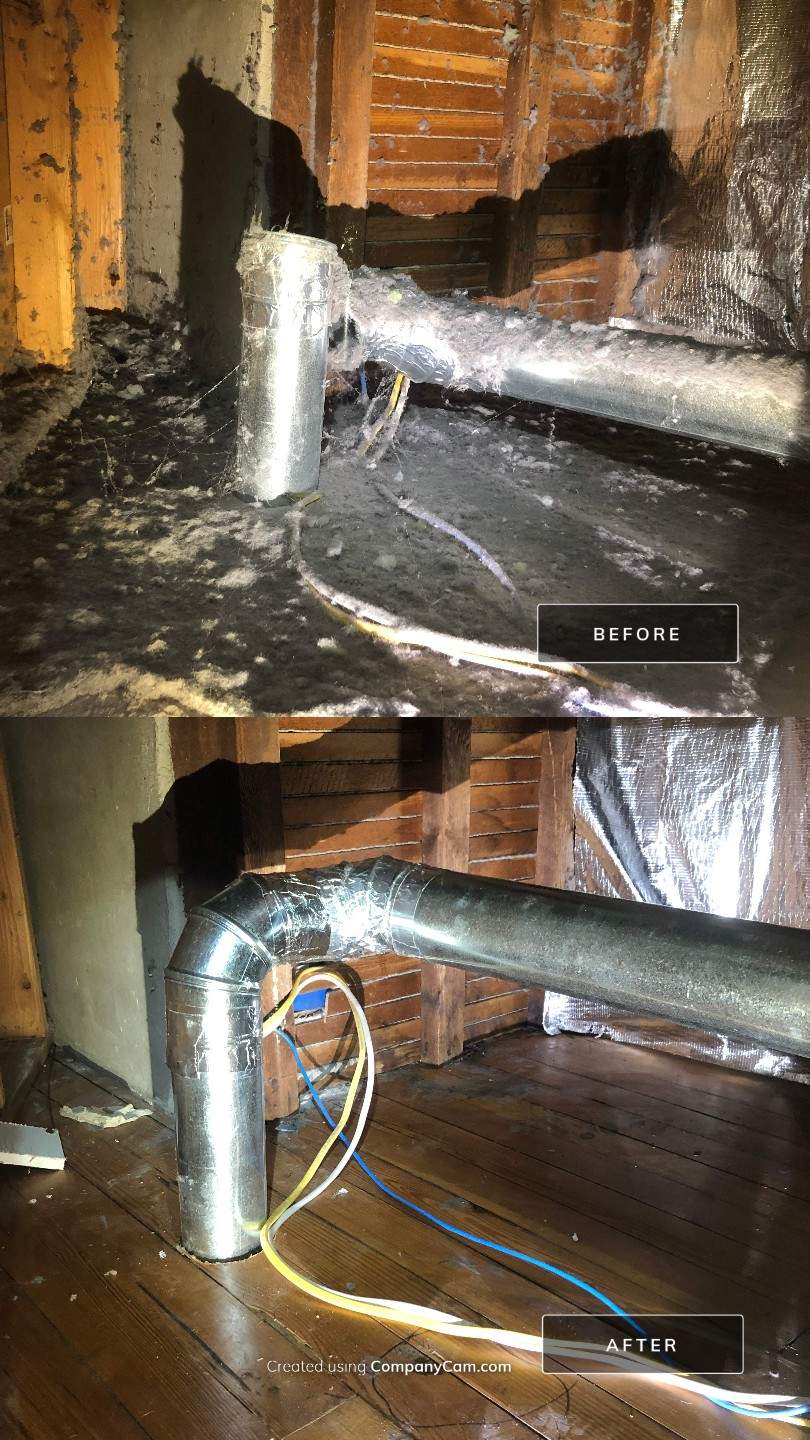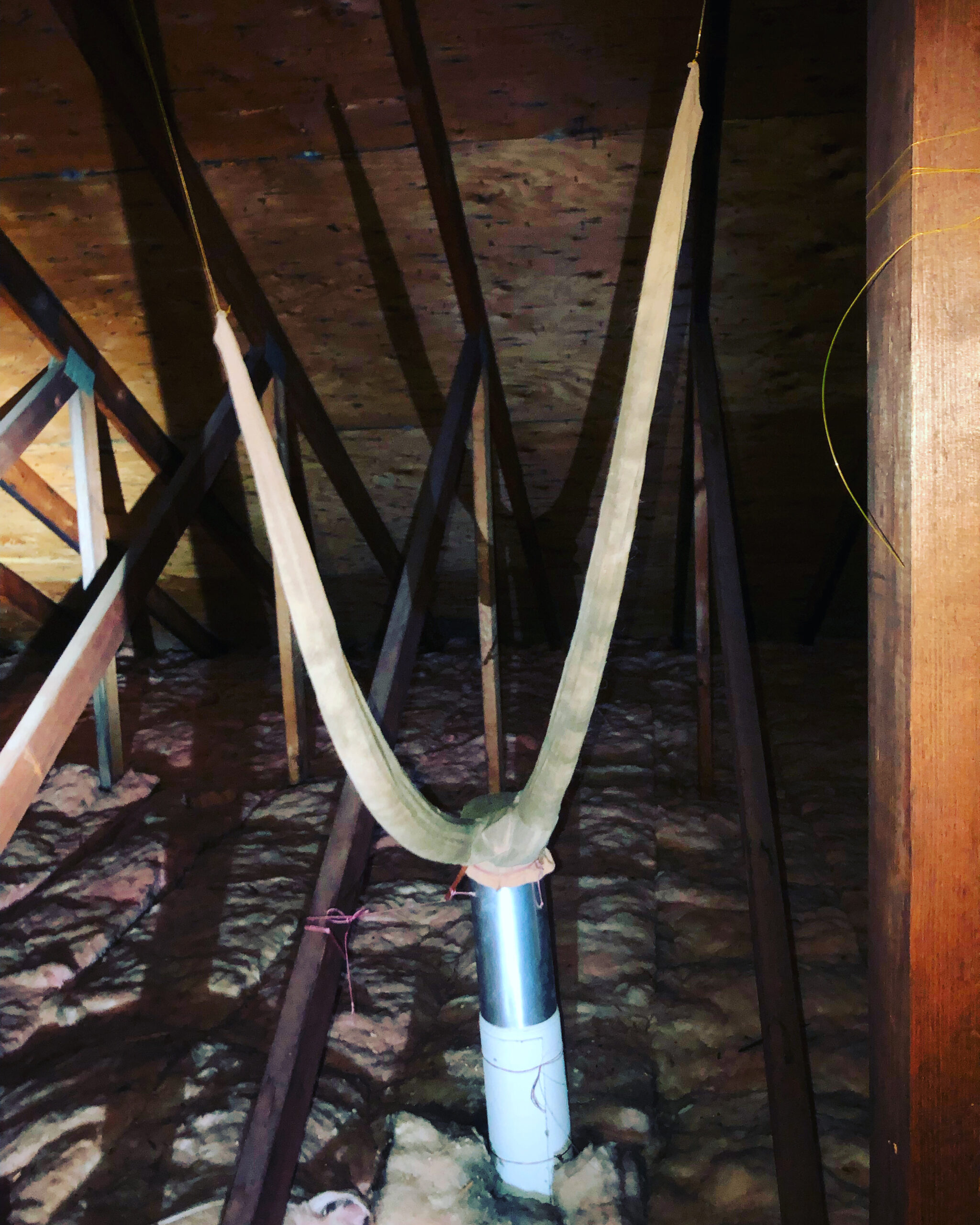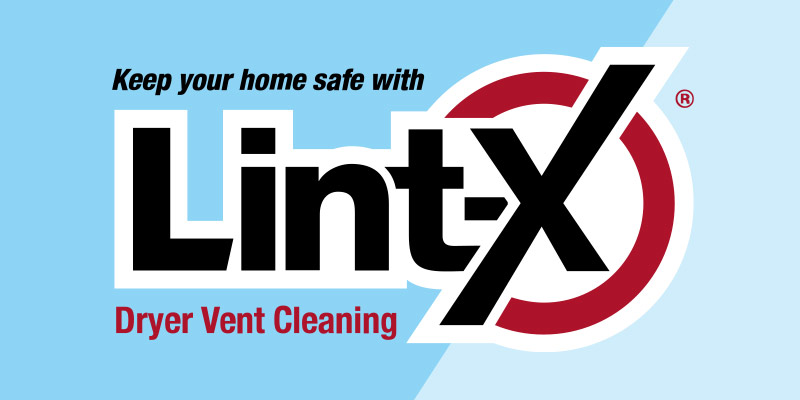Dear Home Inspector,
As experts in the field of home inspection, you’re well aware of the importance of identifying every potential issue that could affect a property’s safety and value. One area we’ve found that can often be overlooked, even in thorough inspections, is the dryer vent system.
A Common Oversight with Significant Consequences
In our experience working with homeowners, we’ve encountered numerous instances where dryer vents were broken, disconnected, or never routed to the outdoors. This can lead to serious issues, including:
- Lint Accumulation: Without proper venting, lint builds up inside the home, creating a fire hazard.
- Heat and Moisture Buildup: These can cause mold growth and damage to the home’s structure.
- Health Concerns: The excess moisture and particulates can contribute to respiratory issues for the occupants.

Dryer Vent Blowing into Attic Soffit
Here you can see the dryer vent terminating right at the soffit or eaves. The dryer exhaust can’t escape efficiently and so the lint just builds up at the soffit and spews into the attic. The heat and moisture create a ripe environment for mold which you can see growing on the underside of the roof sheathing.

Before and After of Dryer Vent Repair
We were called to clean this dryer vent system for a family in Katonah, NY.
During our preliminary inspection we discovered that the duct was broken in a concealed attic crawlspace. The customer had no idea. We created access through the wallboard in the closet, vacuumed the linty mess, made the duct repair, cleaned the rest of the system and closed up the wall.

A Creative but ill-advised Dryer Vent Solution
We were called to clean this dryer vent system in Yorktown Heights, NY. I’m sure I was startled to find this demonic looking “filter” system. We provided an estimate to reroute this to the outdoors instead 🙂
Can you guess what that filter material is?
An Easy Way to Check
While we know you’re already conducting thorough inspections, here’s a quick tip that might help catch these venting issues:
- Run the dryer during your inspection.
- Locate the exhaust flow outside. Be sure to distinguish it from other exhausts, such as those from bathrooms.
- Look for a cover with lint buildup and strong airflow. If there isn’t one, the vent may be discharging into an attic, crawlspace, soffit, or even inside a wall or ceiling cavity.
Partnering for Better Inspections
Identifying these issues can add another layer of value to your inspections, helping your clients avoid future problems. If you ever come across a suspect dryer vent system, we’re here to assist in ensuring it’s properly addressed.
We appreciate the critical role you play in home safety and are always available to support your efforts in delivering top-notch service to your clients.
Best,

